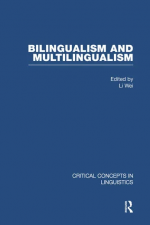Tab Article
Although scientific studies of the language behaviour of polyglots began to appear in the nineteenth century, it is only in the last fifty years or so that bilingualism and multilingualism have been recognized as crucial areas of linguistic research. This new four-volume collection from Routledge showcases the major achievements in this now vibrant multidisciplinary field.


